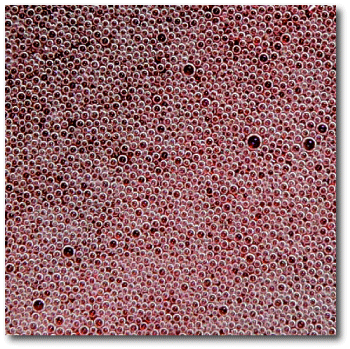
Image Source.
The HATNet survey’s latest single, “3b” landed on the charts last week at #12. This hot (Teff~1053K) new disk shows a definite metal influence, which makes sense, given that [Fe/H] for the parent star is an Ozzy-esque +0.27. You can get a free download of the paper from the Extrasolar Planets Encyclopaedia.
The past twelve months has seen the inventory of known transiting planets more than double, as wide-field surveys such as TrES, Exo, and HATnet start to reach the full production end of their observational pipelines. As the number of planets reaches the threshold for statistical comparisons, interesting trends (or possible trends) have started to emerge.
By far the most remarkable correlation, however, has been with respect to sky location. Among the fourteen fully announced transiting planets orbiting stars with V<14, every single one is located north of the celestial equator.
| Planet |
Mass Mjup |
Period days |
Dec | V |
| Gl 436b | 0.07 | 2.64385 | +26 42 | 10.68 |
| HAT-P-1 b | 0.53 | 4.46529 | +38 40 | 10.4 |
| HAT-P-3 b | 0.61 | 2.8999 | +48 02 | 11.86 |
| HAT-P-2 b | 8.64 | 5.63341 | +41 03 | 8.71 |
| HD 149026 b | 0.36 | 2.8766 | +38 21 | 8.15 |
| HD 189733 b | 1.15 | 2.21857 | +22 43 | 7.67 |
| HD 209458 b | 0.69 | 3.52475 | +18 53 | 7.65 |
| TrES-1 | 0.61 | 3.03007 | +36 38 | 11.79 |
| TrES-2 | 1.98 | 2.4703 | +49 19 | 11.41 |
| TrES-3 | 1.92 | 1.30619 | +37 33 | 12.4 |
| WASP-1 b | 0.89 | 2.51997 | +31 59 | 11.79 |
| WASP-2 b | 0.88 | 2.152226 | +06 26 | 11.98 |
| XO-1 b | 0.9 | 3.941534 | +28 10 | 11.3 |
| XO-2 b | 0.57 | 2.615838 | +50 13 | 11.18 |
Looks like there’s some opportunity down under…
